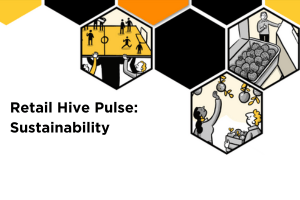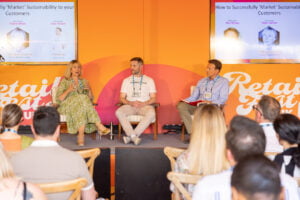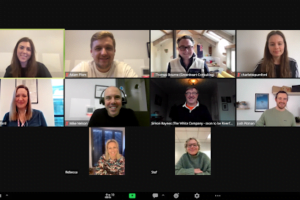Hive Heroes:
Lush’s Green Hub is a prime example of a closed-loop cycle with their bring-it-back scheme for recyclable pots, where customers can return used pots, receive a free face mask, and then Lush recycle the pots into new ones.
They’re now striving to keep up the momentum as they move towards bigger and more sustainable projects.
Jake Firth
Logistics Manager
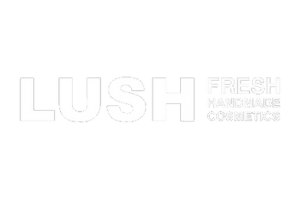
Jake recently shared Lush’s sustainable progress with Frances at The Retail Hive. Read on to hear his story…
You don’t want to be investing too much money into things that you can solve just through communication.”
Are you seeing a significant shift in attitudes towards sustainability both within Lush and in the wider community?
We have always been a bit ahead of the curve, to be honest, however, we can always do more. We’ve been working on reducing the amount of air freight we send and have significantly increased our use of ocean freight. In fact, we’ve managed to reduce it by tens of thousands of kilos each quarter, which is really positive. We export from Poole to many of our global manufacturers. A great example is Japan; we used to send a lot of air freight there, but over the last year or two, we’ve worked hard to reduce air freight as much as possible. For example, in Q1 last year, they had around 75 shipments, and this year, thanks to shifting much to ocean freight, they’re below 30 ships.
We also opened a brand new green hub here in Poole about two years ago. It was a big investment for us, and we do a lot of work for it internally. It’s not just a global logistics solution; we work on sustainability locally with partners and even with our suppliers.
Many businesses seem to find they hit a wall in terms of sustainability, once they have tackled the low-hanging fruit. What are the challenges Lush faces in keeping up the momentum as you move towards bigger projects?
We’re currently struggling with forecasting and planning for ocean freight, especially given the current state of the global freight industry. With everything going on, it’s difficult to forecast and plan what we can send against the extended lead times we’re seeing. We’re doing a lot of work internally and with our international partners on improving those lead times, getting product and range sign-offs done much earlier in the year. This should help us reduce the last-minute panic of getting materials out so they can be produced for our unique and innovative products.
This has been the biggest barrier we’re still trying to overcome, but we’re doing a lot of hard work to forecast better and plan around the current lead times of the global freight industry.
It’s something we’ve done incrementally. We’ve invested in a new internal ERP to help us track things better, but it’s mostly been organisational—more conversations, more planning, more meetings, and just making sure things are solidified at an earlier date. You don’t want to be investing too much money into things that you can solve just through communication.
How do you join up with other parts of the business and your suppliers to work on sustainability projects and targets business-wide?
Currently, 42.5% of our carbon footprint originates from our supply chain. We actively track our carbon footprint with all our forwarders to identify reduction opportunities and monitor our internal fleet’s mileage.
We have a great sustainability team here at Lush. I can see the Green Hub from my window, which is a constant reminder of our sustainability goals. I meet with them regularly. One project we’re excited about is our effort to electrify my internal fleet to make it more carbon neutral.
We’ve also been in talks with a pioneering company in London that plans to sail a completely carbon-neutral container vessel. It’s primarily wind-powered when out on the open ocean, and docking manoeuvres are done with hydrogen. Although it’s not ready yet, we’ve signed a letter of intent to work closely with them once it is operational.
Another initiative involves using biofuels for our domestic freight across the UK. We’ve implemented the use of HVO (Hydrotreated Vegetable Oil), which reduces carbon output by around 95% and is made from chip fat. It’s clean, sustainable, and can be used in any diesel truck, though finding the right supply is a challenge we’re currently addressing. Unfortunately, it’s not available for air or ocean freight yet, but efforts are underway. On this one, we have also paid for HVO credits (so it’s like an inset) through good shipping in the past. It’s still available, but we stopped it as we found out they were buying animal fat from slaughterhouses. There is also a HVO option for air—SAF—but this was too expensive.
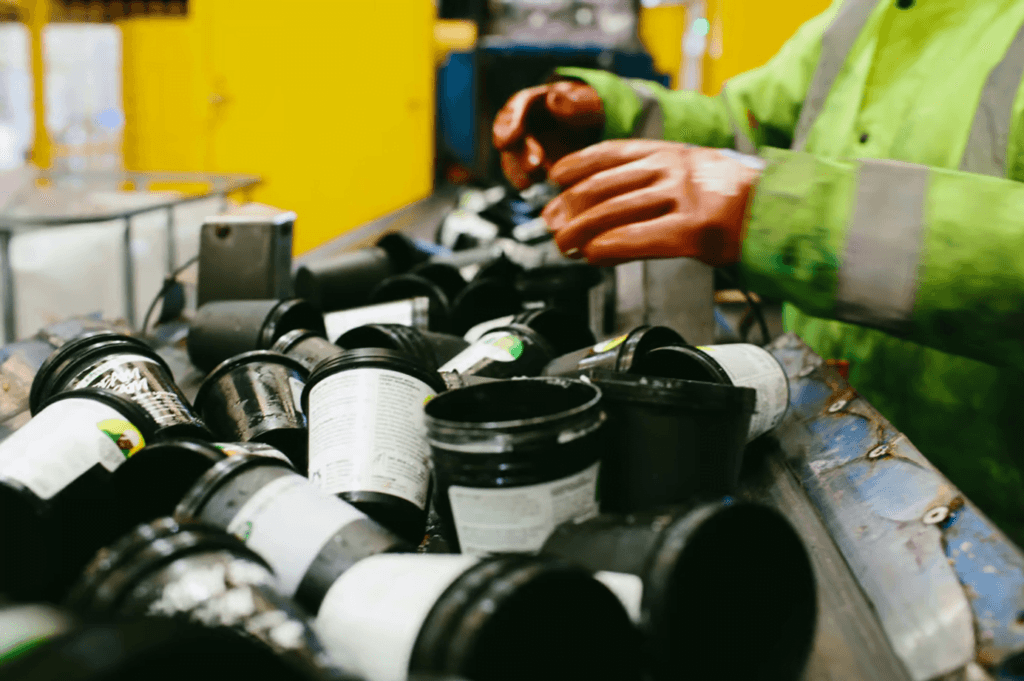
The low-hanging fruit—such as efficiencies—are relatively straightforward to implement. However, as we delve deeper, we need to consider where we are investing and what the cost implications will be.”
Have you found that your suppliers and service providers are ready to meet you where you need to be in terms of sustainability?
Recently, they’ve really stepped up; they’re keen to work with us because they recognize the importance of enhancing their own sustainability credentials. Often, one of the first things a carrier will mention is their latest project or initiative, which demonstrates their commitment. It’s clear they understand we prioritise sustainability, and I’ve definitely observed a shift. Many businesses are aiming to be carbon-neutral by around 2030 to 2040—a big goal, but a necessary one.
Given the size of Lush, we tend to work with big names because they can handle our demands more effectively, but have also met with some startups that are doing incredible work in the space as well. For example, I recently met with a digital freight forwarder that operates entirely online and has an excellent portal. This experience has inspired us to pursue similar technological solutions for our operations.
How are you finding that delicate balancing act between sustainability and cost drivers?
As we’ve discussed, the low-hanging fruit—such as efficiencies—are relatively straightforward to implement. However, as we delve deeper, we need to consider where we are investing and what the cost implications will be. Balancing the need to manage costs while boosting sustainability efforts is a substantial challenge. For example, at our Green Hub, we’ve invested millions of pounds, and thankfully, we’re seeing returns on investment, which is fantastic. However, in terms of freight, it’s quite difficult; the biofuel HVO that we’re switching to is hard to find at the same price as diesel. We’re willing to pay more for it, but it has to be within reason as we still need to function as a business.
Electrifying our internal fleet presents similar challenges. The cost of electric vehicles is roughly triple that of standard diesel vans or trucks. Despite these challenges, we do invest where it makes sense. Logistics as a sector is significantly lagging and needs improvement. We are planning to shift our business globally to an 80% reliance on ocean freight and 20% on other modes.
Additionally, we are working towards powering all our manufacturing units with 100% renewable energy. We’re nearly there, with some facilities already fully converted. Our Green Hub exemplifies a closed-loop cycle with our bring-it-back scheme for recyclable pots—customers return used pots, receive a free face mask, and we recycle the pots into new ones. Also, our spas use a lot of laundry services, and we wash these with recycled rainwater here in the UK.
Furthermore, all our manufacturing units recycle their water; any chemicals are treated at our Green Hub before disposal. It’s a lot of work, but it ensures that we are as green as possible in every area. Our operations in Canada are nearly 100% non-fossil fuel, for North America we’re now on 100% renewable energy but it’s through RECS purchase (like carbon credits). We are now using 100% renewable electricity globally but we’re a way off with gas. We’re trying to prioritise moving gas operations over to electric. There’s always more to do, but it’s fulfilling to see such initiatives being implemented.

